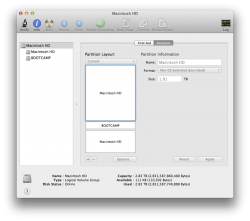Hi!
When new operating systems gets released, I like to do a fresh install on my computers.
I was wondering, how does it work, when I'm going to install Mavericks on my iMac with Fusion Drive? Can I just format the drive as normally, and it'll install the operating system on the SSD part of the Fusion Drive? Or would I need to do something special in order to make it function like it does now?
//ifraaank
When new operating systems gets released, I like to do a fresh install on my computers.
I was wondering, how does it work, when I'm going to install Mavericks on my iMac with Fusion Drive? Can I just format the drive as normally, and it'll install the operating system on the SSD part of the Fusion Drive? Or would I need to do something special in order to make it function like it does now?
//ifraaank


